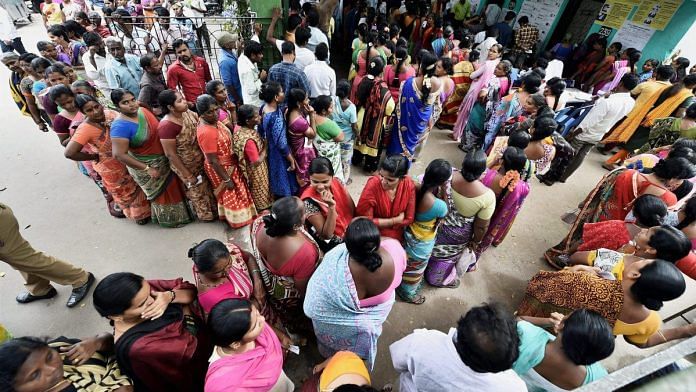The Indian press and public have largely sustained the notion that an increase in voter turnout signals anti-incumbent sentiment- especially in the run up to the May 2014 general election- but empirical investigations tell a different story.
In recent years, several empirical analyses casting doubts upon this hypothesis (increase in voter turnout signals anti-incumbent sentiment) have made their way into the popular media, if not scholarly literature yet. In an analysis of three Lok Sabha election cycles (1999, 2004 and 2009), Praveen Chakravarty (2014) finds no significant correlation between the level of voter turnout and the probability of an incumbent losing his or her seat. Psephologist and academic Yogendra Yadav (2009) and Rukmini Shrinivasan at The Hindu (2014) also confirm the absenice of a national trend, with Shrinivasan noting a weak positive relationship between turnout levels and incumbent re-election rates.
While these analyses provide compelling evidence that there is no negative relationship between absolute levels of turnout and the probability of re-election, they do not focus on relative turnout, measured in terms of the change in turnout over the previous election. Studies that have investigated the relationship between relative turnout and incumbency, however, also have generally found a weak or nonexistent relationship.
One analysis, contained in a Bank of America-Merrill Lynch study as reported by journalist Joydeep Ghosh (2014), finds no significant association between incumbency and relative turnout in national parliamentary elections dating back to 1977. In an opinion piece, Karthik Shashidhar, a data journalist with Mint who covered the 2014 elections (2014) examines national parliamentary elections in 1999 and 2004. He finds a weak relationship between changes in turnout and incumbency.
Evidence against the anti-incumbency hypothesis can be found in state elections as well. The Bank of America-Merrill Lynch study cited above also investigates the hypothesis using state assembly election data from 2009 to 2014, again finding no clear trend. Devendra Kumar, a psephologist and director of Research and Development Initiative, studied state (2014) assembly election data as far back as 1971 and fails to find signs of a strong connection between relative turnout and incumbency, while Prasanna Tantri, who works for the Centre for Analytical Finance at the Indian School of Business (2014) reports a weak negative correlation between relative turnout and incumbent vote for state assembly elections between 1980 and 2012.
Tantri writes that, on average, a 1 per cent increase in turnout is linked with a 0.3 per cent decline in the incumbent’s vote share. Because the authors, Milan Vaishnav and Jonathan Guy, are unable to locate the complete analysis, it is not immediately clear whether this result was statistically significant or if the analysis controlled for other factors. While there appear to be several analyses of the relationship between turnout and incumbency, they claim that they are not aware of a thorough statistical examination of this relationship apart from newspaper opinion pieces or private sector research reports.
Vaishnav and Guy’s study fills this gap by looking at several decades of data from state assembly elections. Unlike many of the analyses conducted to date, the authors use three different measures of incumbency— a simple binary measure of whether the incumbent was reelected, the change in its seat share, and the change in its vote share.
Second, they employ a number of statistical controls to account for alternative political factors that could affect incumbency. They also use state and time fixed effects to account for unrelated variation that is specific to individual states and time periods.
While the conventional wisdom holds that an increase in relative turnout is emblematic of anti-incumbent sentiment among the electorate, this wisdom does not appear to be supported by their analyses. There is a no significant relationship—positive or negative—between relative turnout and incumbent performance across all three electoral measures. The same result holds once when they include controls for political factors that could plausibly affect incumbent performance. All of their analyses employ time and state-specific fixed effects as well as a time trend, which collectively take into account significant unobserved sources of variation. Further disaggregating elections according to their timing does not change their overall conclusions.
This excerpt was taken from the paper Does Higher Turnout Hurt Incumbents? An Analysis of State Elections in India by Milan Vaishnav and Johnathan Guy. Published by Lokniti, Centre for the Study of Developing Societies, SAGE Publications.
Published with permission from Milan Vaishnav.






